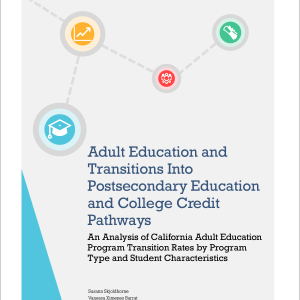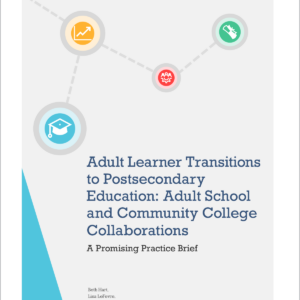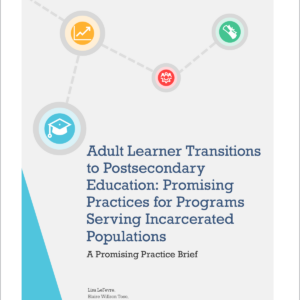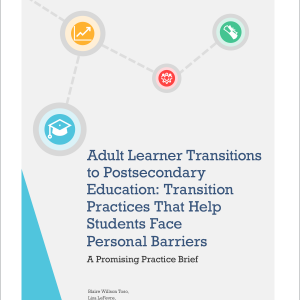How Can Educators Help Learners Navigate the Evolving Labor Market?
Posted on
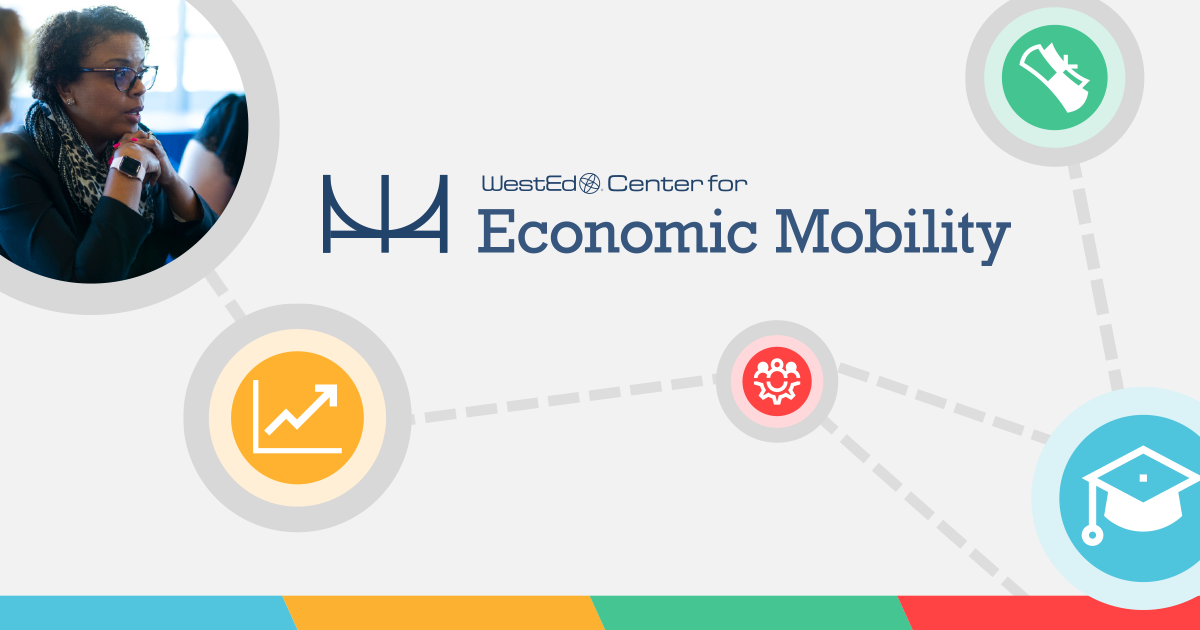
This post was originally published by WestEd’s Center for Economic Mobility.
The world of work is changing in ways that make it challenging for learners to identify career options and the most appropriate training programs to prepare them for those opportunities. For example, advances in technology and increasing specialization mean that employers are looking for both interdisciplinary skill sets and highly specific knowledge. In addition, there may be many potential pathways to emerging fields, especially for adults who have already attained relevant competencies in other contexts. Educators can help learners navigate these transitions by providing specialized knowledge of regional labor market needs, related education programs, opportunities for work-based learning that leads to job placement, and supports that help to cover the full cost of participating in training. While this type of advising has traditionally only been available in career and technical education programs, it can benefit learners across all types of education and training programs.
A range of institutions—including high schools, adult education providers, community colleges, universities, and workforce systems—are creating career navigator positions to help learners understand how to build skills that are valued in the labor market, advance within a sector, and attain a living wage. In many ways, this role is the evolution of the traditional student adviser, encompassing knowledge of course progression toward awards while also providing concrete connections to employment and further economic opportunities.
While the role of career navigators is similar across these various institutions, there is flexibility in the design of their engagement to ensure that services are learner centered and provide effective guidance for local contexts. For example, at high schools, career navigators may focus on exposing students to a variety of career pathways, whereas a community college might emphasize programs for rapid upskilling that lead to high-quality careers and are also latticed to broader degrees.
The role of career navigators may also reflect where institutions are located. In rural communities, where institutions often have a service area of hundreds of miles, career navigators may be dedicated to serving specific geographic areas within that territory. In Tribal contexts, there is a need for career navigators who can work respectfully within Indigenous communities; understand the nuances of Indian Education and postsecondary financing; and carry specific knowledge related to employment in Tribal government, Tribal enterprises, and TERO offices (Tribal Employment Rights Ordinance or Office).
Finally, career navigators may provide guidance for all program areas or focus more narrowly on a specific sector. For example, in the case of advising on information and digital technology, a career navigator might provide information on the following:
- local industries, relevant subsectors in the local economy, or public sector needs (such as whether employers are focused on software testing or the management of cybersecurity threats at large server farms, or are in need of networking administrators in local government organizations)
- current job openings, projections for job openings, and typical wages (such as what types of jobs are currently available in the field of artificial intelligence)
- in-demand skills and industry credentials (such as Python, CompTIA Security+, or Cisco certifications)
- trajectories for career development (such as opportunities to move from help desk jobs to network administration)
- available educational programs with integrated industry credentials (such as IT classes or programs aligned with CompTIA and Microsoft credentials at noncredit technical centers, community colleges, and four-year institutions)
- institution-specific knowledge to support enrollment and retention (such as when courses are scheduled, matriculation processes, access to financial aid, and work-based learning opportunities)
- related services that can enable low-income learners to remain enrolled (such as how to leverage programs funded by the Workforce Innovation and Opportunity Act to receive housing, childcare, and transportation support)
In addition to supporting learners in navigating training pathways to family-sustaining jobs, education institutions can benefit from investing in career navigators. Learners are more likely to enroll in programs that have a clear return on investment, which can address declining participation in postsecondary education and the growing narrative that college is not worth the cost. If educators provide this information to all learners—especially those in popular majors with less obvious career opportunities, like the humanities and social sciences disciplines—they can address both their own and their students’ bottom lines.
For examples of ways to provide information on the relationship between education and jobs in common sectors and majors, see sample Opportunity Maps developed by WestEd or read this case study of how career navigators benefited adult learners at an adult school.
Sign up to receive news from WestEd’s Center for Economic Mobility. Visit economic-mobility.wested.org.

